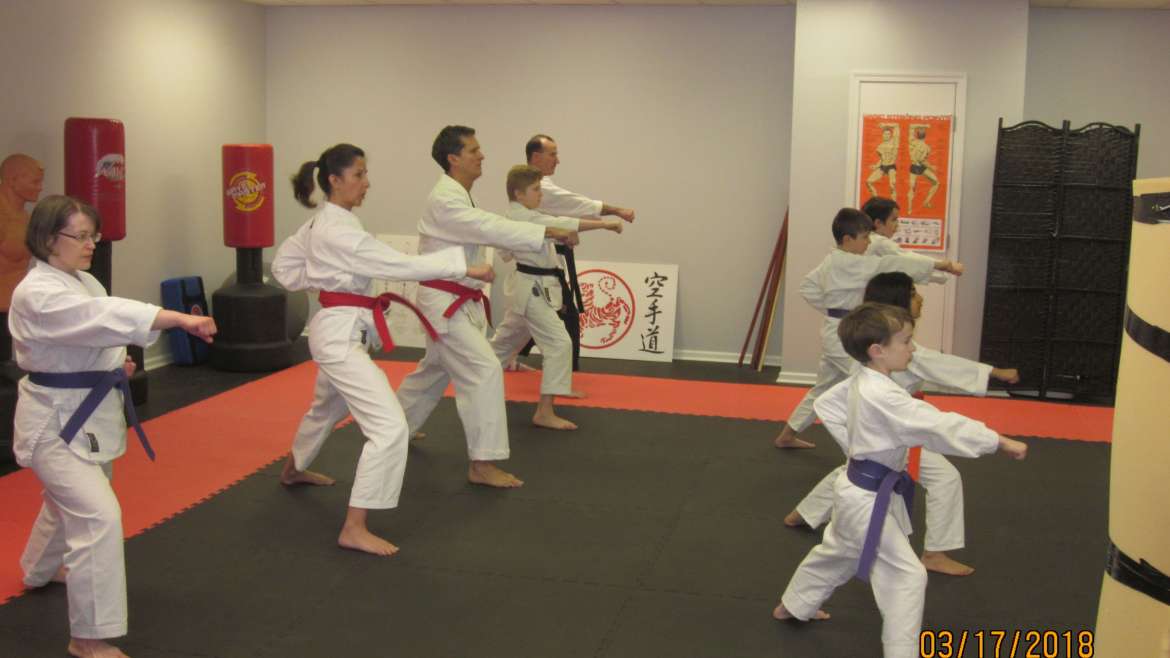BENEFITS – Mental
Karate is a wonderful physical practice that leads to mental improvement. Like the physical improvements, we notice mental development as especially pronounced among our child students, but this progress continues through the entire ‘training life’ of the serious adult student, too.
Our training is rigorous and combines several types of practice. One is the traditional kind, whereby a teacher (sensei) gives commands and students follow those commands, in unison with each other. Another is individual training where there is no sensei directly telling you what to do, and it requires your own intrinsic motivation to push yourself to action. (In this, we often tell students to cultivate their “inner sensei,” that voice that barks commands to you from your own mind!)
The third type of practice is practice in pairs or small groups, during which students are expected to push (motivate) each other.
The techniques and combinations we teach students start out very simple and gradually progress, over the years, all the way to quite sophisticated sequences of complex movements involving all four limbs, and including different kinds of stepping and turning. Going beyond that, in self-defense training, the students gradually learn how to improvise and be creative when faced with unscripted threat scenarios.
Needless to say, learning and progressing to higher-level skills, while continually refining and correcting the performance of basic techniques, requires mental focus, commitment, self-discipline, and perseverance. Promotions of rank and belt color occur as a result of performance, not merely time put in. Promotion is earned through sweat, pain, hard work, and letting temporary failure be an opportunity for improvement rather than a reason to quit.
At another level, that of self-protection, Shuto Karate practice offers practice in performing under pressure. (The same applies to testing for promotion, which occurs approximately every 6 months.) We learn how to avoid “fighting” and the provoking of fights, and in the last, we work on ethical clarification, so that we each have established our own thresholds regarding the situations in which we are willing to cause harm to another person.


